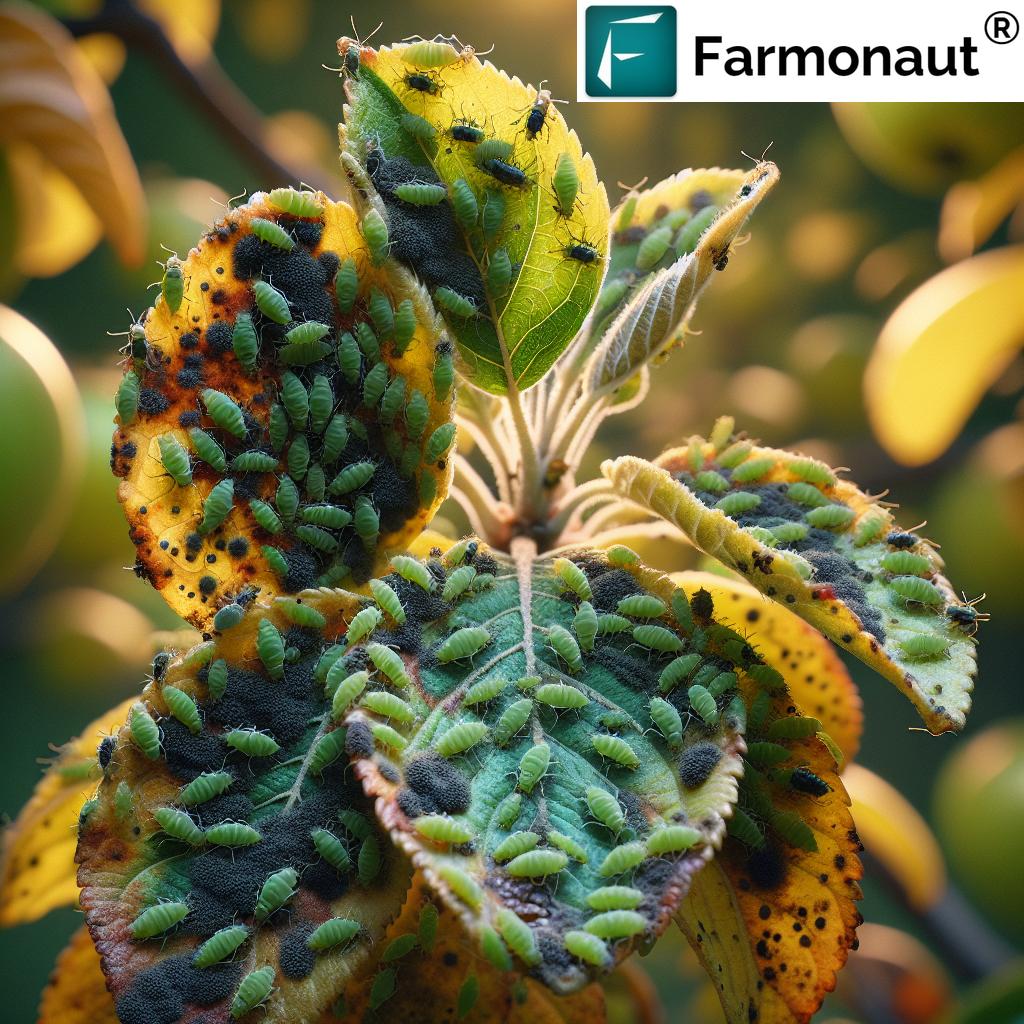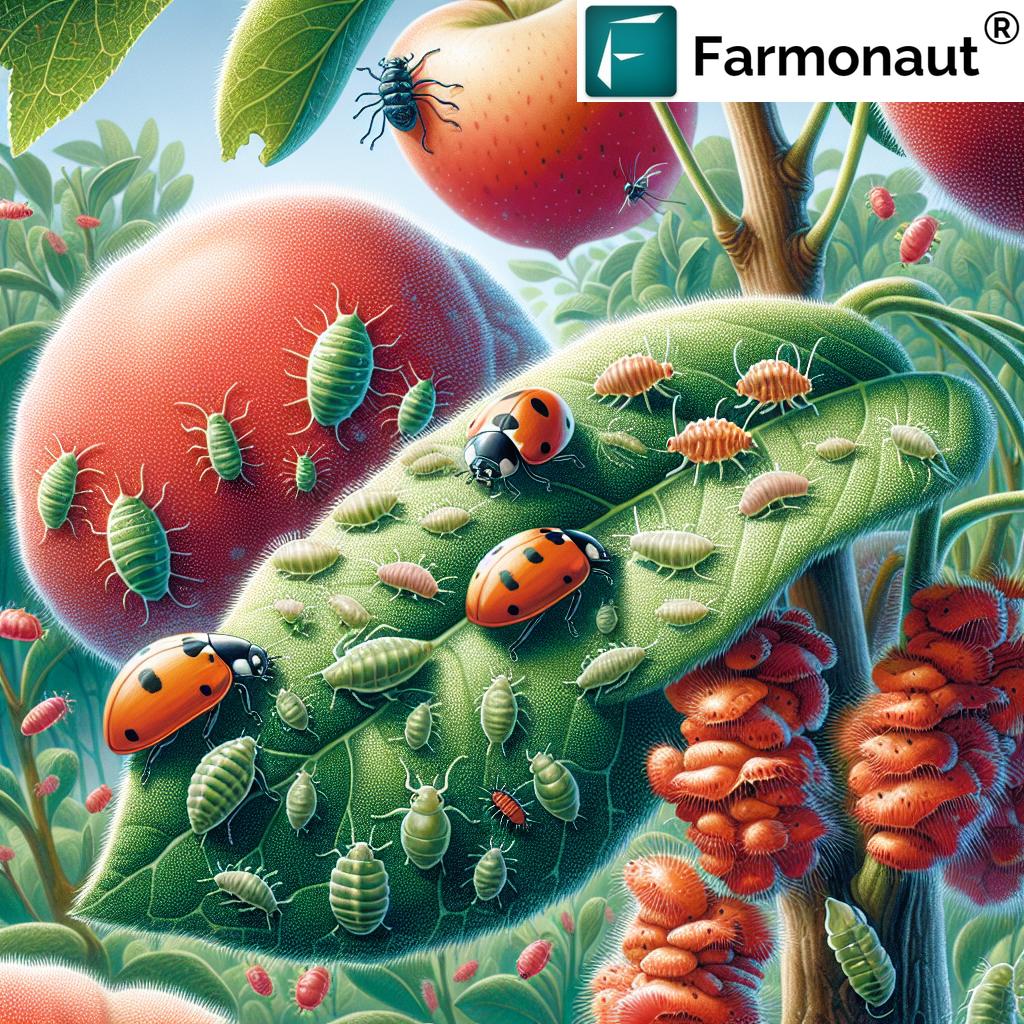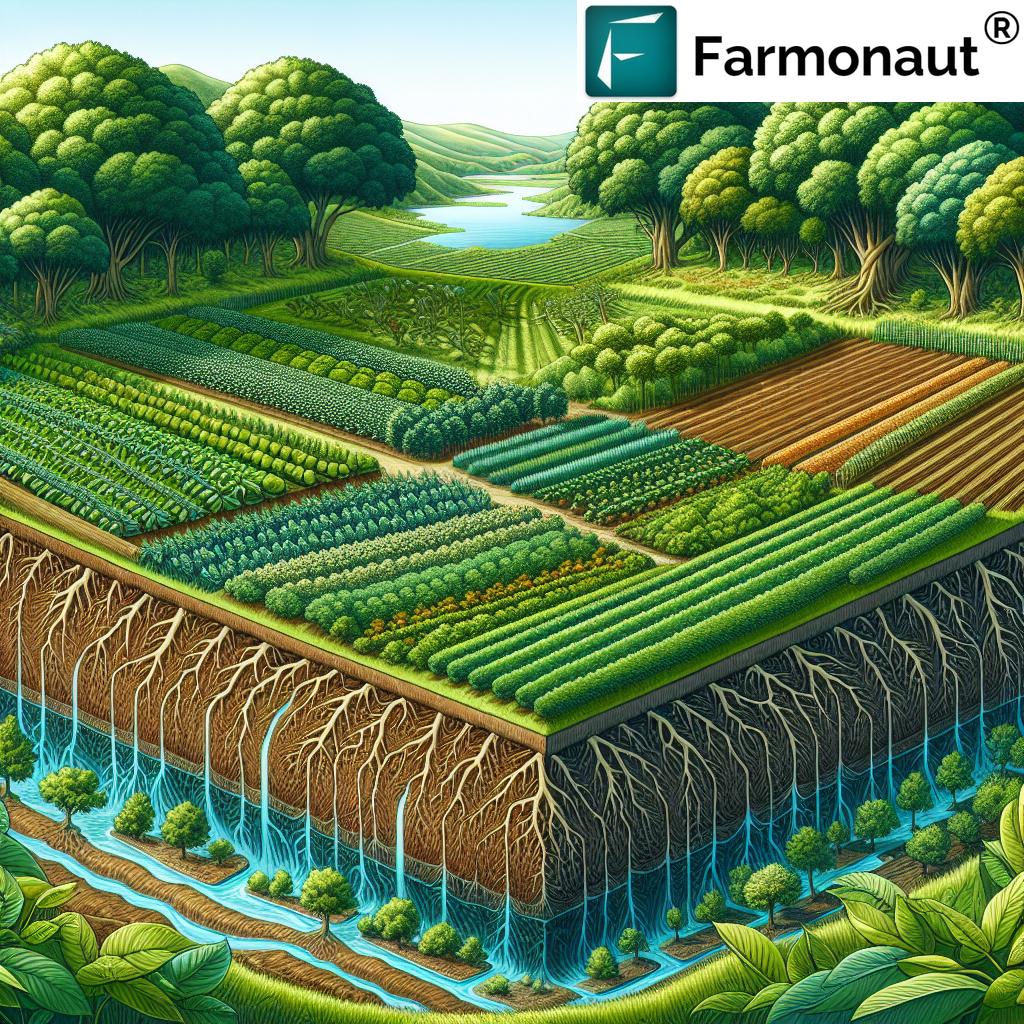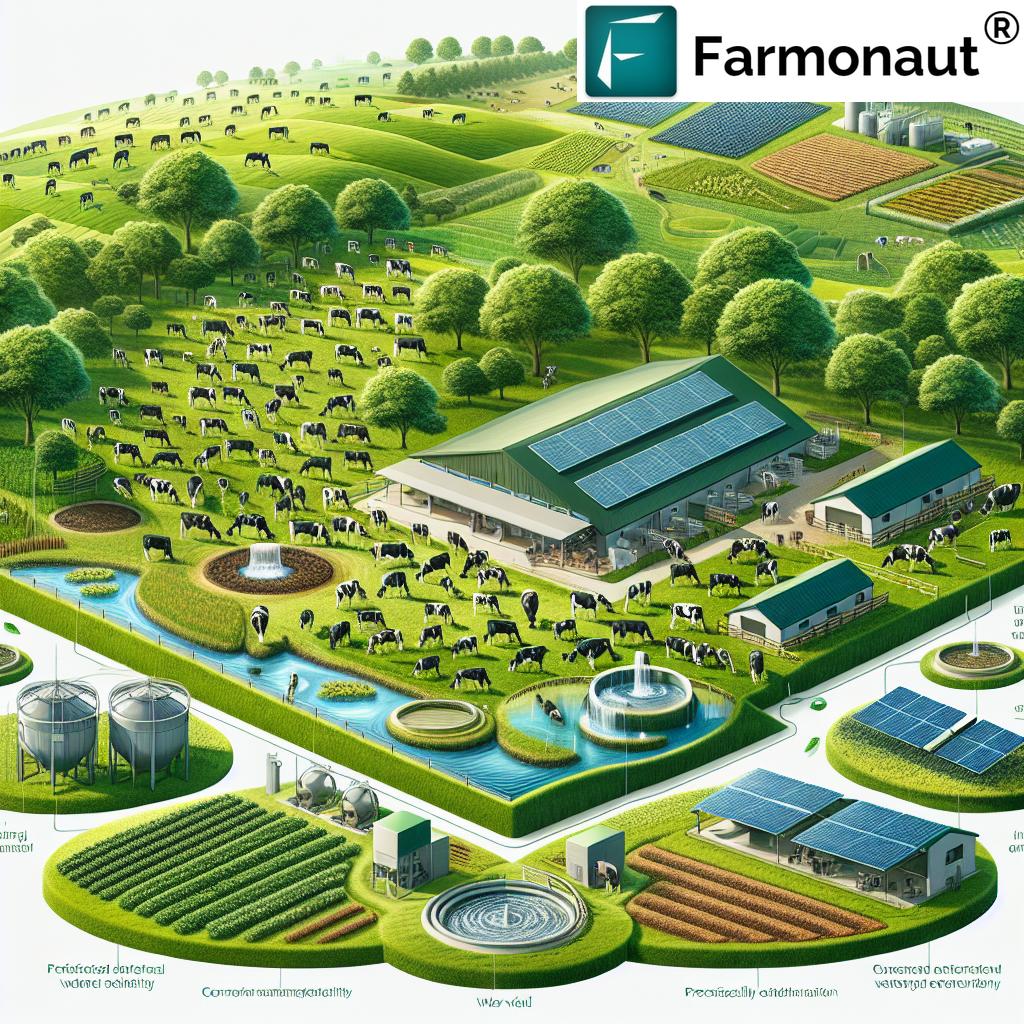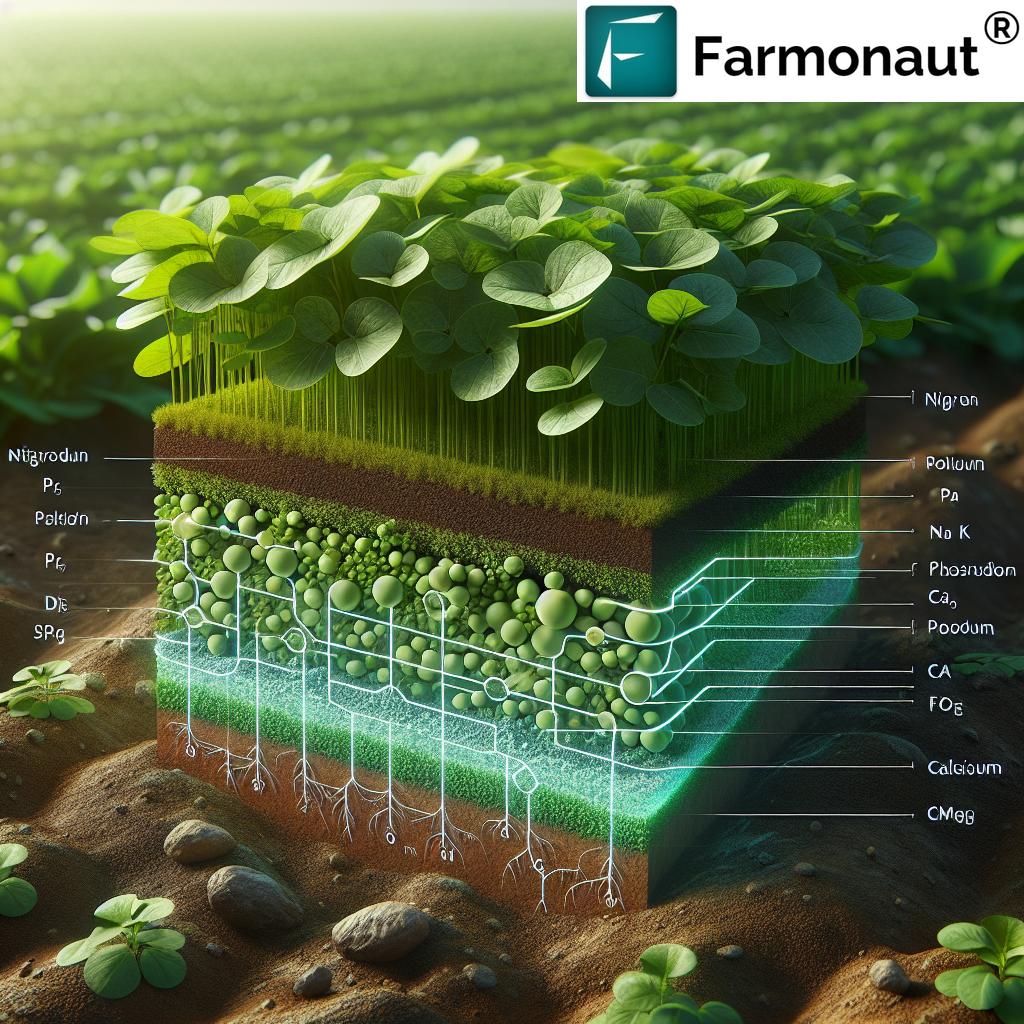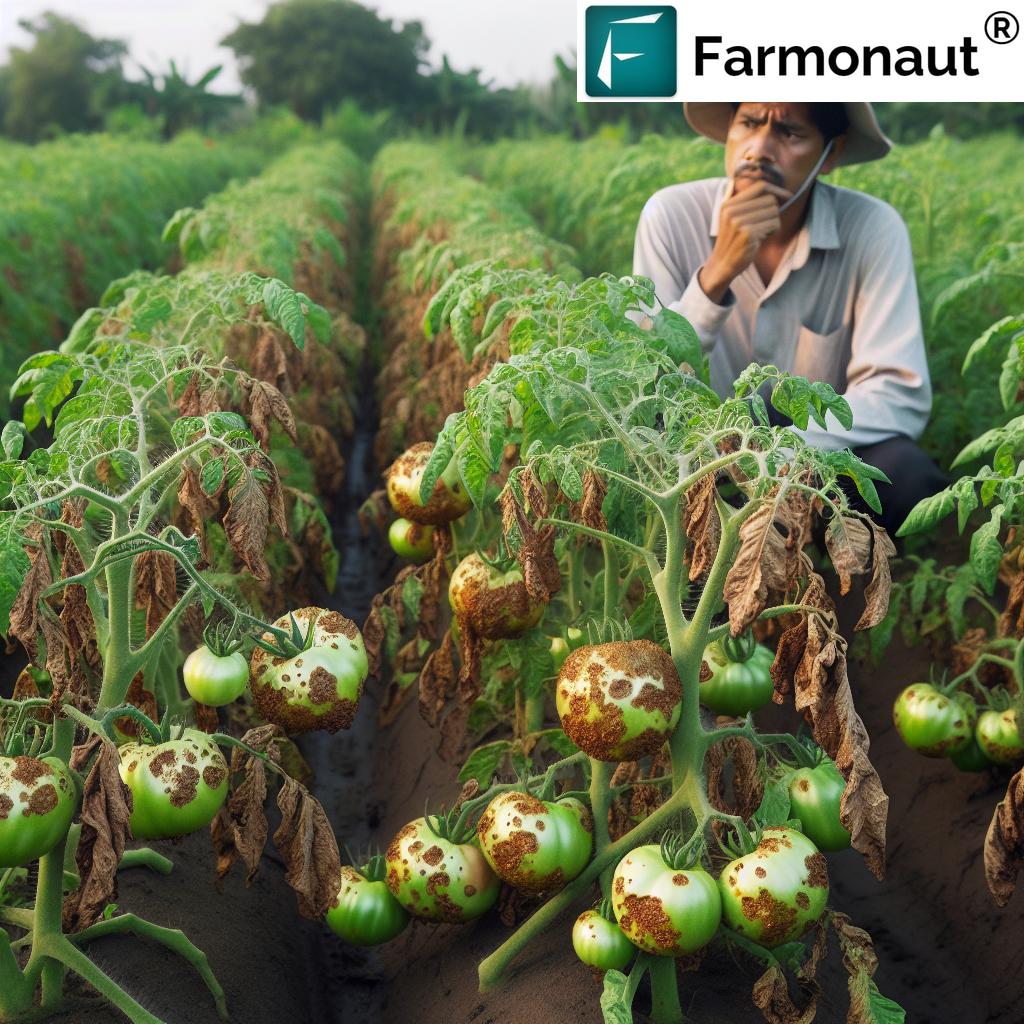Aphids on Fruit Tree: 7 Effective Control Strategies
Summary: Aphids on Fruit Trees: Identification, Impact, and Management Strategies
Aphids are among the most prevalent and damaging pests affecting fruit trees worldwide. Their rapid reproduction, ability to transmit plant viruses, and potential to cause significant sooty mold and other damages make aphid infestations a critical issue for orchardists and home gardeners alike. In this article, we’ll guide you through identifying aphids on fruit trees, understanding the extent of their damage, and implementing the best aphid control methods—combining cultural, biological, and chemical strategies, as well as leveraging cutting-edge technologies. Whether you’re a commercial grower or a hobbyist, our integrated pest management for aphids and actionable insights will help you maintain healthy orchards and optimize your fruit quality and yield.
“Up to 80% of fruit tree yield loss can be attributed to unchecked aphid infestations each season.”
Table of Contents
- How to Identify Aphids on Trees
- Understanding Aphid Damage to Fruit Trees
- 7 Effective Aphid Control Strategies
- Comparison Table of Aphid Control Methods
- Modern Farm Management with Farmonaut
- FAQs: Aphid Control, Tree Health & More
- Conclusion
How to Identify Aphids on Fruit Trees: A Practical Guide
Recognizing aphids early is crucial for managing aphid infestations and minimizing their impact on tree health and fruit yield. Aphids belong to the family Aphididae, and their appearance can vary considerably depending on species and environment.
Biology and Appearance
- Size: Aphids are small, soft-bodied insects (generally 1-4mm long).
- Shape: Pear-shaped with long antennae and, in many species, two small tubes (cornicles) projecting backward from the abdomen.
- Color Varieties: Their color may be green, black, red, yellow, brown, or even pink, depending on the specific aphid species and host plant.
Common Aphid Species Affecting Fruit Trees
- Green Peach Aphid (*Myzus persicae*): Usually pale green or yellow, sometimes pink. This species is a major vector for plant viruses (including CMV and PVY), especially on peach, plum, and apricot trees. (About Green Peach Aphid)
- Woolly Apple Aphid (*Eriosoma lanigerum*): Recognized by their white, waxy, cotton-like coating, these aphids infest apple tree roots, branches, and trunks, causing knotty galls. (About Woolly Apple Aphid)
- Rosy Apple Aphid (*Dysaphis plantaginea*): Purple-pink with a powdery white wax on their back, causing severe leaf curling and distortion, primarily on apple trees. (About Rosy Apple Aphid)
Tip: Aphids quickly build colonies on the undersides of leaves, new shoots, and tender stems. Gently shake a few leaves over a white paper to spot these tiny pests. If you notice stickiness, ants, curling leaves, or a waxy white buildup, aphids are likely present.
How to Identify Aphid Activity on Trees
- Curling, yellowed, or distorted leaves—especially new growth (very common with apple tree aphids and peach aphids).
- Sticky “honeydew” deposits on leaves, fruit, or beneath the canopy—sometimes attracting ants or leading to black sooty mold on fruit trees.
- Presence of white shredded “skins” near colonies (aphid molting) and clusters of aphids on shoots and stems.
Quick Reference: The Signs of Aphid Infestation
- Leaf Curling: Twisted or bunched young leaves, primarily seen on apple and peach trees.
- Sooty Mold: Black, powdery mold develops on honeydew, impacting sunlight penetration and limiting photosynthesis.
- Ants: Ants farm and protect aphids for honeydew. Where there are ants, aphids are usually present.
Understanding Aphid Damage to Fruit Trees: The Full Impact
Appreciating the range of aphid damage is vital for managing tree health and fruit quality. Aphids threaten not only the current harvest but can also weaken entire orchards season-to-season.
How Do Aphids Damage Fruit Trees?
- Feeding Injury: Aphids use their piercing-sucking mouthparts to extract sap from plant tissues, draining essential nutrients and water. This stunts the growth, weakens tree vigor, and can eventually reduce fruit set and size.
- Distorted Foliage & Fruit: Leaves may curl, become yellowed, or develop odd, twisted appearances—especially if the infestation occurs during rapid spring growth.
- Sooty Mold Development: Aphids excrete sugary honeydew, which creates a sticky coating on plants. Fungi colonize this, developing black sooty mold that obstructs sunlight, hampering photosynthesis and lowering fruit quality.
- Virus Transmission: Many species, like Myzus persicae, are efficient vectors of plant viruses (e.g., cucumber mosaic virus (CMV), potato virus Y (PVY)), causing mottling, yellowing, or curling leaves, and can devastate yields.
- Fruit Quality Reduction: Stressed, infested trees may produce fewer, smaller, or oddly-shaped fruit, with sticky residue or black mold that reduces marketable yield.
“Aphids can reproduce up to 12 generations per year, rapidly overwhelming unprotected fruit orchards.”
Real-World Examples of Aphid Consequences
- Peach & Apple Trees: Infestations that begin in spring can persist all season, with up to 80% yield loss if left unchecked.
- Aphid-Related Sooty Mold on Fruit Trees: Sooty mold makes fruit unappealing and can prevent proper ripening, directly affecting farm profits.
- Virus Epidemics: When aphid populations are high, the spread of plant viruses can decimate entire orchards, especially if aphid control is delayed.
Key Takeaways About Aphid Damage to Fruit Trees
- Even small aphid populations can cause significant damage through sap feeding and virus spread.
- Unchecked infestations harm tree health, impact yield, and cause cosmetic damage to fruit—reducing both quality and marketability.
- Sooty mold and viral infections are clear indicators of severe aphid issues that demand integrated management strategies.
7 Effective Aphid Control Strategies for Fruit Trees
Controlling aphid populations requires a thoughtful, multi-tiered approach. By combining cultural, biological, and chemical methods, and by leveraging new technologies, we can keep aphid infestations below damaging thresholds while safeguarding the health of our orchards and the environment.
1. Cultural Control: Good Practices as a First Line of Defense
Cultural practices target the environmental conditions that invite or enable aphid outbreaks. These strategies are fundamental to prevention and provide a foundation for sustainable pest management.
- Pruning: Regularly remove infested shoots and leaves, especially in spring when aphid populations can explode. This reduces colonies and improves light and air penetration, helping the tree out-compete the pests.
- Water Management: Maintain consistent soil moisture without overwatering. Both drought and lush, succulent growth (from excessive nitrogen fertilizer) encourage aphid activity.
- Weed & Host Plant Control: Remove weeds and wild plants near trees—many aphid species overwinter and breed on alternate hosts.
- Encourage Diversity: Plant nectar- or pollen-rich companion flowers like alyssum, dill, or calendula under trees. These attract natural predators of aphids such as ladybirds, lacewings, and parasitic wasps.
By adopting these cultural strategies, we significantly reduce conditions that favor aphid outbreaks and support overall tree health.
2. Biological Control of Aphids: Harnessing Nature’s Enemies
Biological control means letting nature do the work. When managed well, natural predators and parasites can keep aphid numbers far below thresholds that cause economic or aesthetic damage.
- Introducing Natural Predators: Ladybugs (lady beetles), lacewing larvae, hoverfly larvae, and predatory midges are voracious aphid eaters. Ladybugs alone can consume hundreds of aphids in their life!
- Parasitic Wasps: Species such as Aphelinus mali (targeting woolly apple aphids) lay their eggs inside aphids—turning pests into harmless “mummies” that stop feeding. Other wasps like Lysiphlebus testaceipes and Praon also parasitize various aphid species.
- Conservation Practices: Avoiding broad-spectrum, non-selective insecticides preserves beneficial insects. Supplying nectar plants sustains predator populations even when aphids are scarce.
Example: In integrated orchards, encouraging natural predators of aphids keeps populations in check and reduces the need for chemical interventions—an essential step in sustainable, healthy orchard management.
3. Chemical Control Methods: When and How to Use Responsibly
Chemical controls should be a targeted, last-resort measure in integrated pest management for aphids, used only when other techniques can’t contain the infestation.
- Insecticidal Soaps & Horticultural Oils: These “soft” pesticides coat and suffocate aphids. They’re most effective against young nymphs and require thorough coverage. They have minimal impact on beneficial insects if used correctly and avoid the development of pesticide resistance. (Learn more)
- Systemic Insecticides: Products absorbed by the plant and transported to all tissues can quickly reduce severe infestations. However, these options can harm pollinators and beneficials, so restrict use to only when necessary and follow label instructions. (Explore here)
Best Practices:
- Spot-treat affected trees rather than whole-orchard spraying.
- Apply during times when beneficial insects are least active (e.g., early morning or late evening).
4. Monitoring and Inspection: Staying Ahead of Aphid Infestations
Regular observation of your orchards is critical—aphid colonies can multiply rapidly. Monitoring lets us catch infestations early and respond before significant aphid damage to fruit trees occurs.
- Routine Scouting: At least every week during the growing season, check the undersides of leaves, shoot tips, and areas where previous infestations occurred.
- Thresholds for Action: Set site-specific thresholds: for example, if more than 10% of shoots show aphid colonies, or if honeydew and sooty mold appear, initiate control.
- Ant Surveillance: An uptick in ant activity can signal rising aphid numbers before obvious symptoms manifest.
5. Integrated Pest Management for Aphids
To manage aphids on fruit trees most effectively, combine cultural, biological, and chemical methods based on real-time monitoring and specified action thresholds.
Integrated pest management for aphids minimizes pesticide resistance and negative impacts on non-target insects, ensuring a healthy ecosystem for productive orchards.
- Preventive Focus: Encourage plant vigor and monitor regularly, starting with cultural and biological techniques. Use soft chemicals only as needed.
- Data-Driven Decisions: Use past infestation trends and current observations to guide interventions—never treat by default.
- Record-Keeping: Document what works best for your trees, so you can fine-tune your approach over time.
6. Technological Approaches: Data-Driven Aphid Management for Modern Orchards
Precision agriculture technologies offer orchardists a scientific edge in managing aphid populations. Using satellite imagery, AI analytics, and real-time crop health monitoring, we can catch aphid outbreaks before they cause economic damage.
- Satellite-Based Crop Monitoring: Leverage solutions like Farmonaut Large Scale Farm Management for real-time NDVI analysis, soil moisture mapping, and early detection of plant stress that may be linked to aphid feeding.
- AI-Driven Advisory: AI analyzes crop data and weather trends to predict pest outbreaks, helping guide preemptive action and minimize unnecessary chemical use.
- Resource and Application Tracking: Platforms like Farmonaut Fleet Management allow for optimized pest control application timing and coverage, reducing both cost and environmental impact.
- Blockchain-Based Traceability: For those selling fruit, Farmonaut Traceability lets buyers verify that produce was grown under sustainable, science-backed pest control strategies.
For developers and agri-businesses, direct integration of remote sensing and weather datasets into your orchard management system is available via the Farmonaut API (see developer docs).
7. Preventive & Sustainable Measures: Building Long-Term Aphid Resistance
Healthy trees are naturally less susceptible to aphid outbreaks.
- Nutrient Management: Avoid over-fertilization—especially with nitrogen—since lush growth attracts aphids.
- Carbon Footprinting & Sustainable Practices: With Farmonaut Carbon Footprinting, track the environmental impact of your pest management strategy while protecting yield, ensuring orchard sustainability for the long term.
- Comprehensive Crop Advice: Whether for fruit trees, commercial crop plantations, or agro-forestry, Farmonaut Crop, Plantation & Forest Advisory provides data-driven, AI-based recommendations for pest and nutrient management.
- Plant Choice: Choose varieties less susceptible to aphids, rotate crops when practical, and maintain good field hygiene.
Comparison Table of Aphid Control Methods
| Control Strategy | How It Works | Estimated Effectiveness (% reduction) | Application Frequency | Estimated Cost (₹/application or $/application) |
Pros & Cons |
|---|---|---|---|---|---|
| Cultural Control | Pruning, sanitation, water & fertilization management, encouraging companion flora | 30–50% | Seasonally, as part of orchard maintenance | Low (Mainly labor cost) | Prevents outbreaks, sustainable; limited impact on severe infestations |
| Biological Control | Release or conservation of natural predators and parasitic wasps | 60–90% | 2–3 times per season or as needed | Moderate (Cost of insects/beneficials) | Eco-friendly; may take time to establish, may not provide instant suppression |
| Chemical Sprays (Soaps/Oils) | Contact action insecticides (soaps or oils) kill aphids on contact | 50–80% | Every 7–14 days until control achieved | Low–Moderate (₹100–400/$2–8 per app.) | Quick results; requires thorough coverage, can miss hidden pests |
| Systemic Insecticides | Absorbed by plant and spread to sap, killing feeding aphids | 80–99% | 1–2 per season (if threshold reached) | High (₹500+/ $10+ per app.) | Highly effective; may harm non-targets, resistance risk, not organic |
| Monitoring & Thresholds | Regular inspection and action only when necessary | Prevents unnecessary interventions | Weekly during spring-summer | Minimal (Labor/time) | Cost-effective; risks delayed action if not diligent |
| Integrated Pest Management | Uses a combination of cultural, biological, and chemical methods | 90–99% | Ongoing (adaptive to conditions) | Varies (Balanced approach) | Comprehensive, sustainable; requires planning, more time |
| Technological Solutions | Satellite AI crop health tracking, resource optimization, digital advisories (e.g., Farmonaut Platform) | 70–95% (when used with IPM) | Real-time, continuous | Subscription Model (affordable per hectare) |
Data-driven, scalable, enhances early warning; requires adoption of digital tools |
Modern Farm Management with Farmonaut: Take Aphid Control to the Next Level
While traditional aphid control strategies remain vital, adopting digital farm management can amplify your results. With Farmonaut, you access a comprehensive platform that integrates real-time satellite-based crop health monitoring, AI-driven pest and crop advisories, blockchain-based traceability, resource management tools, and sustainability solutions—all from your mobile device or desktop.
What Sets Farmonaut Apart?
- Affordable Crop Health & Pest Monitoring: Analyze aphid hotspots, detect stress signs early, and monitor overall fruit tree health using satellite imagery—no expensive field hardware required.
- Actionable, Personalized Advice: Jeevn AI delivers precise insights and tailored pest management recommendations, reducing guesswork, time, and resource wastage.
- Environmental Accountability: Track your orchard’s carbon footprint as you adapt pest management measures—essential for modern sustainable farming.
- Supply Chain Confidence: With blockchain-based traceability, you can prove your produce was grown using responsible, integrated aphid management—boosting consumer trust.
- Large-Scale Orchard Management: Seamlessly monitor and coordinate pest control actions across plantations of any scale.
- Better Access to Crop Loans & Insurance: Satellite verification for farm insurance and loans streamlines your access to finance while reducing risk and fraud.
Subscription-Based, Customizable for All Orchards
Whether you are a commercial grower, a collective, or a home orchardist, Farmonaut offers flexible, pay-as-you-grow subscription plans—scalable from a single hectare to hundreds. For the latest pricing, see below:
For more about API integration and custom business solutions, see the Farmonaut API Developer Docs.
FAQs: Aphids, Control Strategies, and Orchard Health
How do I identify aphids on fruit trees quickly?
- Look for clusters of small, soft-bodied insects under leaves and on young shoots. Common signs include distorted/curling leaves, sticky residue (honeydew), black sooty mold, and increased ant activity. Use a hand lens or shake infested leaves over white paper for closer inspection.
What is the fastest way to reduce aphid populations?
- For immediate reduction, apply insecticidal soaps or horticultural oils thoroughly, ensuring complete coverage of infested areas. For sustainable long-term suppression, combine cultural practices and encourage the presence of natural predators.
Is sooty mold on fruit trees dangerous?
- Sooty mold is not directly toxic, but it can dramatically reduce photosynthesis, stunt growth, and make fruit unmarketable. It always points to sap-feeding insects, commonly aphids.
When should I use chemical insecticides for aphid control?
- Only when other measures fail and infestation is causing economic or severe health damage to trees. Always follow integrated pest management principles, choose the least-toxic product, and avoid harming beneficial insects.
Can aphids really cause virus outbreaks in orchards?
- Yes. Some aphids, especially Myzus persicae, transmit viruses such as CMV and PVY that can devastate fruit trees by causing stunted, mottled, or deformed growth and yield loss.
Will Farmonaut help with aphid detection and monitoring?
- Absolutely. Farmonaut’s satellite-based crop health monitoring detects early signs of plant stress, often related to aphid feeding, enabling rapid, targeted action. It integrates with mobile and web platforms so orchardists can monitor remotely in real time.
How does biological control of aphids compare to chemical control?
- Biological control is sustainable, safer for pollinators, and helps prevent aphid resistance. However, it may take longer to see results compared to chemical controls, which provide quick suppression but risk harming beneficial insects if used improperly.
What’s the best way to ensure sustainability while managing aphids?
- Adopt integrated pest management for aphids, regularly monitor trees, apply preventive cultural and biological measures, and use digital solutions to track orchard health and minimize unnecessary interventions. Tools like Farmonaut’s carbon footprint tracking support long-term environmental responsibility.
Conclusion: Take Control of Aphids for Healthier Fruit Trees and Higher Yields
Aphids remain among the most damaging pests for fruit trees, with the potential to inflict direct feeding damage, virus transmission, and sooty mold that can cripple orchard productivity and fruit quality. The key to managing aphid infestations lies in rapid identification, understanding the biology and impact, and deploying a suite of effective aphid control strategies.
By blending proven cultural, biological, and chemical methods with the power of advanced technologies, we create a sustainable, data-driven defense against aphids on fruit trees—whether in a single home orchard or across vast commercial plantations. Make monitoring, integration, and adaptive decision-making central to your pest management. Farmonaut stands ready to empower fruit growers everywhere with precision agriculture tools that keep orchards healthy, productive, and resilient in a changing agricultural landscape.


